The Rising Sun comes with bombs on Easter Sunday – By Capt Elmo Jayawardena
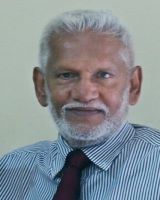 I am no aviation historian, just an aeroplane driver who spent a long time in the sky. The Japanese bombing of Sri Lanka in 1942 is mainly information that passed from people to people as the years rolled. Some subtracted the truth and some others exaggerated the myths. I want to share with readers what little I found out and perhaps shed a little more light on events that took place a long time ago on an Easter Sunday morning.
I am no aviation historian, just an aeroplane driver who spent a long time in the sky. The Japanese bombing of Sri Lanka in 1942 is mainly information that passed from people to people as the years rolled. Some subtracted the truth and some others exaggerated the myths. I want to share with readers what little I found out and perhaps shed a little more light on events that took place a long time ago on an Easter Sunday morning.
Squadron Leader Leonard Birchall arrived in Ceylon on the 3rd of April 1942. The flight was from Karachi to Koggala where an RAF base was operational. Birchall was from the 413 Squadron of the Royal Canadian Air Force. They, at that time, had a joint operation with RAF to conduct reconnaissance flights over the southern coast of Ceylon. The aeroplanes used were Catalina flying boats, cumbersome giants who had very long endurance that was needed for the extended range of surveillance over water.
The next day, Saturday the 4th April, Birchall and his crew of nine were on patrol. Prior to them, another Catalina had gone out on a similar mission and never returned. Reasons became a little clear later when the incident repeated.
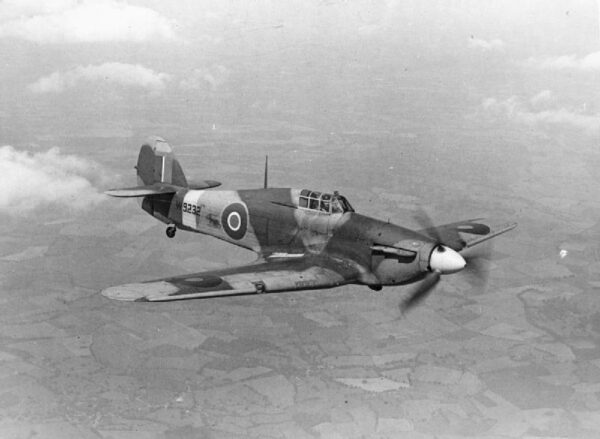
RAF Hawker Hurricane
Birchall crew spotted stick-like images on the calm sea below. It was at 1600 Saturday afternoon, and they flew lower and closer for better identification. The Catalina was 400 miles south of Koggala at that time, according to the calculations of the navigator. What Birchall spotted was the Japanese fleet of Admiral Chuichi Nagumo. He was sailing on course to Ceylon with six aircraft carriers, four battle ships, three cruisers, three destroyers and a total of 300 carrier based aeroplanes.
Birchall ordered alert messages to be sent to Colombo. The laid out procedure was to repeat the Morse coded transmission three times. As the second message was completed, the aeroplane rocked with machine gun fire from six Zero fighters that had taken off from the carrier Hiryu after spotting Birchall’s Catalina.
The radio officer was injured, the radio equipment shattered, and the bullets ripped the entire aircraft and damaged the fuel tanks.
With great difficulty Birchall managed to land his crippled aeroplane in the sea. The fighters continued to strafe and killed three of Birchall’s crew members floating in the water. The remaining six were taken prisoner and interrogated as to whether any alert message was sent to Colombo. They vehemently denied. For their luck, the Japanese intercepted a transmission from Colombo asking the Catalina to repeat the twice received message as it was not very clear.
The logical conclusion is that Colombo never read Birchall’s warning correctly. It was all in Morse code, and the possibility is always there for a misread. When the Japanese fighter bombers flew overhead Colombo the next day, people were in church; it was Easter Sunday. The RADAR station was closed for maintenance, as it was the normal practice on Sundays. The two fighter squadrons, one in Ratmalana, and one in the Colombo Race Course were on the ground and went into full alert only when they saw a sky-full of Japanese aeroplanes all over Colombo.
It certainly was a surprise attack, exactly like what happened at Pearl Harbour.
To accept logically that Birchall’s message alerted Colombo is difficult. A lot had been written about how he saved Ceylon. Maybe true, maybe not, he certainly initiated the warning.
Had Colombo been on high alert, I wonder how many would have left their homes and attended church to celebrate Easter? Or for that matter, the RADAR station most certainly would have been operational and not closed for routine maintenance.
Then the question is did Birchall really save Sri Lanka? I leave you to logically deduce. As in most matters of history, opinions could differ.
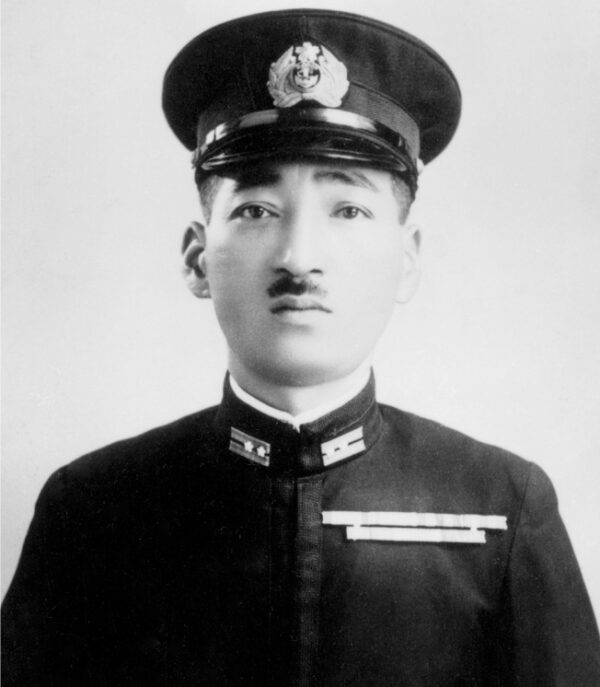
Commander Mitsuo Fuchida
The Japanese aeroplanes led by Commander Mitsuo Fuchida flew into Colombo on the 5th of April 1942, at 7.30 am on Easter Sunday. There were 36 fighters, 54 dive bombers and 90 level bombers flying in formation. Commander Fuchida was a very well-known name in the war annals, as it was he who led the attack on Pearl Harbour and also an attack on the city of Darwin. (featured prominently in the movie Tora Tora Tora )
The Japanese mission was to seek and destroy the British fleet in harbour. They came from the south west. Seeing the Japanese fighters all over the sky, the Hurricanes scrambled from Ratmalana. The squadron stationed at the Race Course grounds too started engines, threw chocks off and roared out to the sky to meet the enemy.
Dog fights took place in the Sri Lankan Sky. People on ground heard and saw the aerial battle and climbed roofs to get a better view. The main attack was at the Colombo Harbour. Whilst dive bombers screamed down to release bombs, the Zero fighter escort flew their aeroplanes to their fuel limits, battling against the RAF Hurricanes. Japanese aeroplanes were shot down, Hurricanes were shot down, parachutes drifted in the sky, pilots jumping out of burning wreckages. Ground batteries too opened fire on the attacking planes.
A Japanese pilot by mistake bombed the home for the mentally-challenged patients in Angoda and 20 inmates died. Around 37 was the total count of the dead on ground that fateful morning. The number of aeroplanes lost is very ambiguous, varying figures keep cropping up at each turn of a page. One states seven Japanese planes were shot down and the RAF lost 27; not possible, unless some of the Hurricanes were destroyed before they even got airborne.
It is believed that Japanese aeroplanes crashed in the following sites. Near St. Thomas’ College, Mount Lavinia, Bellanwila, Pita Kotte, Horana, Galle Face green and on the Colombo Race Course grounds.
A few days before the Japanese attack, most of the British fleet had been moved out to the Addu Atoll of the Maldives, South West of Colombo. This was in response to some intercepted massages received in the previous week about a possible invasion.
“People knew of a likelihood of a Japanese attack. As a precaution, my father took the family to Bandarawela by train on the 1st of April.” So said the son of the then President of the Colombo Aero Club.
The Japanese managed to sink the cruiser Hector and the destroyer Tenedos in the harbour itself. Then they located the Cornwall and the Dorsetshire 200 miles southwest of Colombo and sank them too. Some 424 sailors were killed and a 1,000 plus that survived were saved after hours in the water.
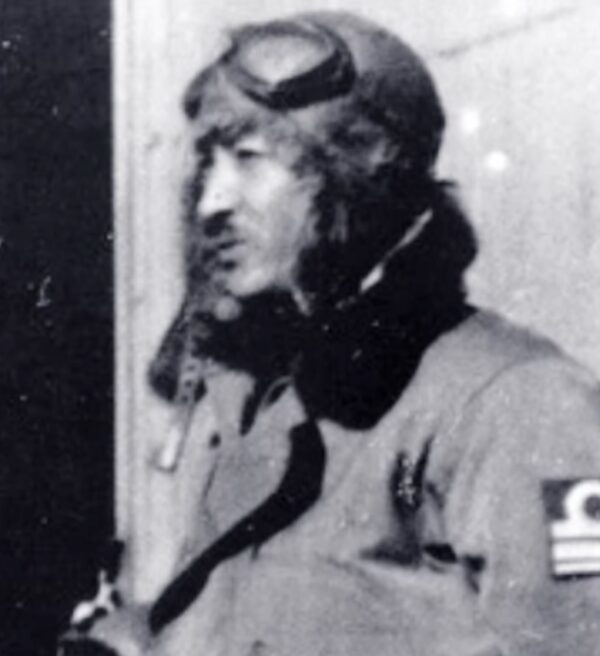
Commander Mitsuo Fuchida
Four days later, the Japanese attacked China Bay. This time they sank HMS Vampire and HMS Holyhock killing approximately 700 people. They hunted down the HMS Hermes and sank her near Batticaloa. The death toll on the doomed aircraft carrier was around 307 sailors.
During the attack on China bay, pilot Shigenori Watanabe operating a Japanese fighter bomber circled around a huge oil tank near the harbour. He had two others in the crew with him, Tokya Goto and Sutumu Toshira. They then power-dived their plane aimed at the tank in Kamikaze fashion. The aeroplane exploded on impact, instantly killed the pilots and completely destroyed the installation.
The Sri Lankan sky saw for the first time suicide bombers killing themselves for their country. Similar actions were repeated many times in another war, in another place. Friend or foe, the sadness is the same, they died for causes they believed in, and they were young.
Commander Fuchida’s raid on Colombo was planned on the same strategy as what he did at Pearl Harbour. Had the British fleet been there on 5th April, they certainly would have all been sunk.
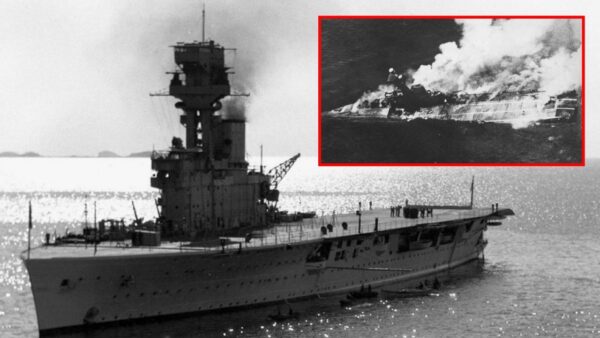
HMS Hermes
The Japanese were not interested in destroying Colombo or any other place in Ceylon. They could have easily done so, if that was the intent. They had so many aeroplanes and complete supremacy of the sky during that Easter morning.
Ceylon was saved, from whom and how? If the Japanese were planning on an invasion, it is logical to think they could have bombed Ceylon and devastated everything. The first wave of aeroplanes was a total of 180, and there would have been another 120 waiting in the carriers. The Japanese planes sank every ship that was visible in the water.
Perhaps that was their plan, perhaps not. I wonder whether the answers will ever be known. Why did Admiral Nagumo take his winning fleet and move away without coming to Ceylon? He may have had his reasons or may have had his orders. The fact is Ceylon was saved, and that is what mattered.
Some stories came up of the people who played different roles when Japan invaded Ceylon on that Easter Sunday. Logically, they are all acceptable. Some have written evidence too. Each one merits mention.
‘Rathu Palliya’ is a little church somewhere in Kelaniya. There had been a small cemetery behind the church. People say they remember an unmarked grave there, swollen earth and a small white grave stone with no words to say who was buried. People also said that a Japanese pilot was buried there. He flew in on the Easter Sunday raid and was shot down and crashed and died.
Someone buried him, and marked his grave, no name.
The cemetery is no more. New constructions are in place. There is no trace of the unmarked grave and the place and the people of the area had obviously forgotten the unknown Japanese fighter pilot.
Squadron Leader Leonard Birchall spent the war years as a POW in Japan. After the war, he returned home to Canada and visited Ceylon on a later date. His aeroplane was the first known to be shot down in the Sri Lankan sky, and his three crew members, the first to die.
The Catalina that flew out before Birchall’s fateful patrol, there never was any trace of it. It is logical to think that they were spotted by the Japanese fleet and some fighters would have shot them down. There is no record accept they were termed missing in action, the first to be recorded so in Sri Lanka.
A young Japanese man came in 1939 to learn to fly in Ratmalana. He became a member of the Aero Club. He was attached to some Japanese mission. Though he came to learn, he had known how to fly, and that too very well, though he pretended he was a student pilot. That was what the instructors whispered to each other in ‘hangar small talk.’
The Japanese trainee pilot did many solo flights over and around Colombo and Ratmalana.
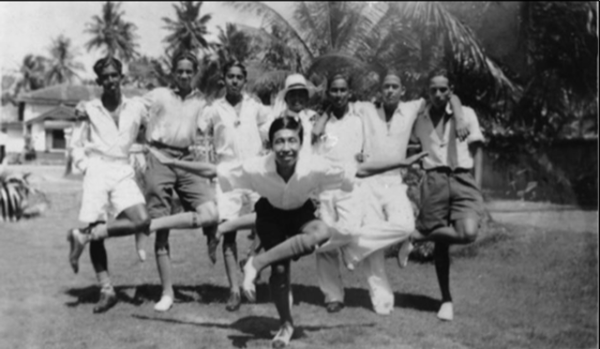
The Japanese pilots
Maybe he wasn’t learning to fly, but gathering information on what he saw from the sky.
It was also said he simply vanished after some time.
Star pilot Commander Mitsuo Fuchida became a defeated man after the war and started working as a farmer to feed his family. In 1950, he embraced Christianity and became an evangelist preaching salvation and converting people to the faith.
His book “From Pearl Harbour to Golgotha” was widely accepted in America and he toured the USA as an ambassador of peace, preaching the gospel.
Like Birchall, Fuchida too came to Ceylon in later years. Not firing a machine gun from a fighter aeroplane, but carrying a Bible.
Commander Mitsuo Fuchida led the attack on Pearl Harbour, the one on Darwin and on Colombo. He was also present at Midway when the famous air battle took place. Fuchida died in 1976 at the age of 73.
So ends the story most of my vintage heard from parents who lived during that time. I have tried vainly to find out why Admiral Nagumo turned back without invading Ceylon. Was it an order or precaution?
Who knows?
Capt Elmo Jayawardena







